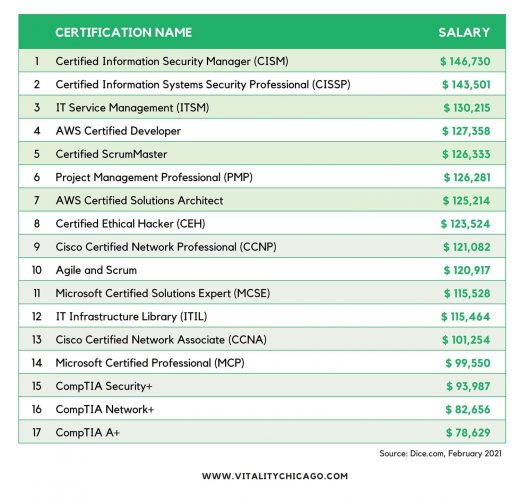2021 Update on PMI Disciplined Agile Certifications
If you have been following this blog you know that I’ve been keeping an eye on the Project Management Institute (PMI) and what they are doing in the agile space. In this article, I want to share some recently released statistics about the popularity of the Disciplined Agile Certifications. I also have included some details about a recent salary survey that includes data on agile certifications. And finally, I am including a brief interview with Jonathan Lee who has been teaching the Disciplined Agile Scrum Master (DASM) and Disciplined Agile Senior Scrum Master (DASSM) ever since they were released last year.
Disclaimer: Vitality Chicago provides Disciplined Agile Training and Certification to our clients, just as we provide Scrum certification training from Scrum.org and Scrum Alliance. You could say we are agnostic and pragmatic and we believe in providing what fits the client’s context.
Some Background on PMI and Agile Certifications
Before we describe the current developments, a little history may be helpful. PMI first got into the agile certifications market in 2012 with the introduction of the PMI Agile Certified Practitioner (PMI-ACP). In 2017 they published the Agile Practice Guide in collaboration with the Agile Alliance. But it wasn’t until 2019 when PMI really made the push into agile and particularly Scrum certifications.
In 2019 PMI really made a splash by purchasing Disciplined Agile and NetObjectives. With this purchase, PMI acquired the agile equivalent of the PMBOK in Disciplined Agile along with a handful of existing Disciplined Agile certifications. You can read more in PMI Goes all in with Disciplined Agile and Flex.
Back in mid-2020, I complained about the lack of visibility to what was happening with the existing Disciplined Agile certifications which I found confusing. And I made some guesses about where PMI was heading. I was wrong of course. It has taken PMI some time but it looks like they are finally making sense of what they bought back in 2019.
In September of 2020, PMI announced that they were retiring some of the existing DA certifications and introducing some new ones. This provided some clarity as to where PMI was heading. The diagram below shows the 5 agile certifications that PMI will offer moving forward.
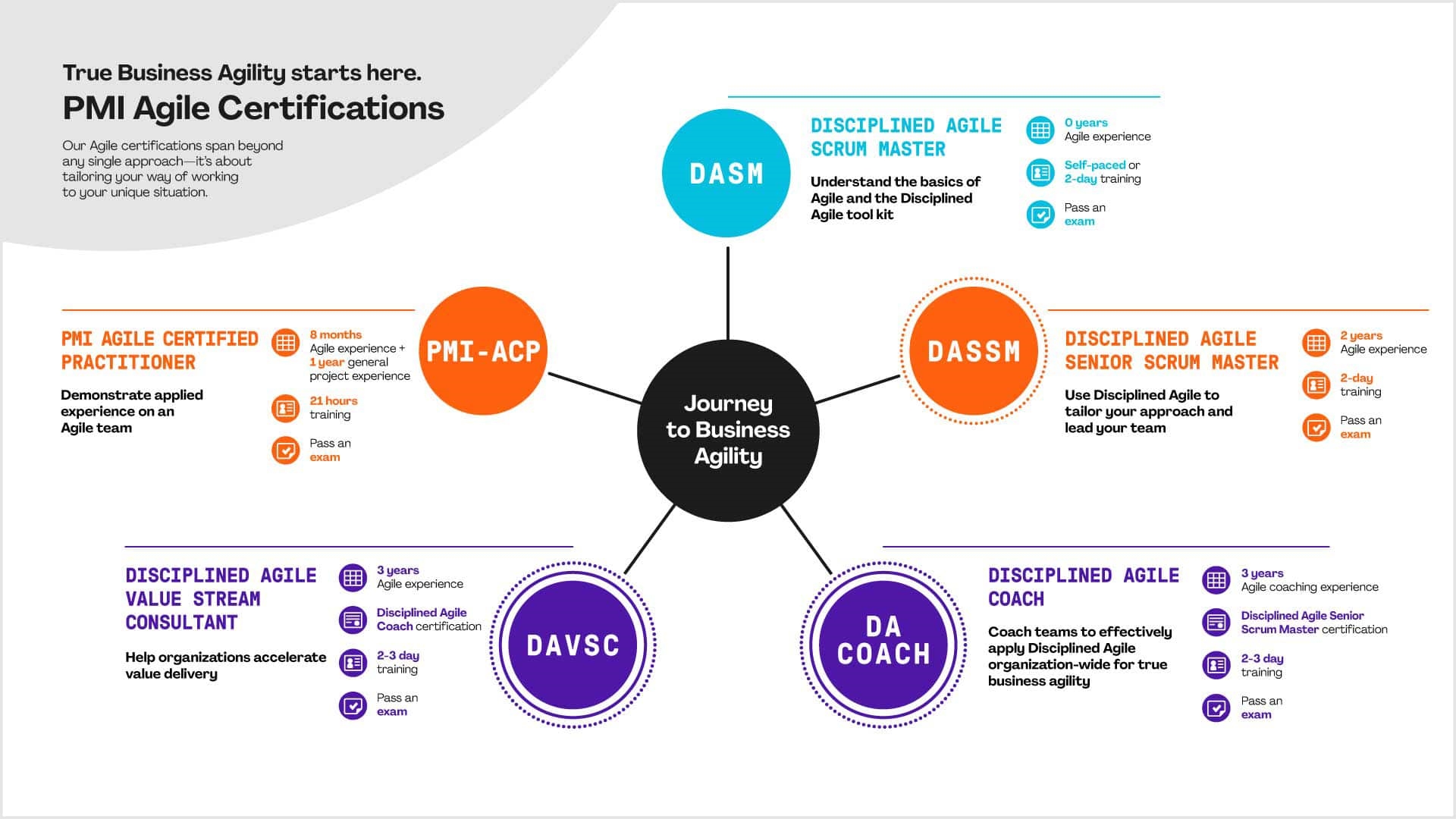
Your 2021 Update on the Disciplined Agile Certifications from PMI
I was really happy to see that starting in January 2021 PMI began publishing statistics on their available certifications. This comes in the form of the PMI FACT FILE. The fact file contains details on membership and certifications and was always included in the PMI Today publication. Since PMI Today is being retired, PMI is now going to post the PMI FACT FILE here on the ProjectManagement.com site on the Critical Path blog.

So what you say? Well, this is the first that PMI has published data on the Disciplined Agile Certifications. Granted, the counter is reset because the DASM and DASSM were just introduced last fall and so not many people have them. But at least now there will be some transparency on just how many people are taking the Disciplined Agile training courses and getting certified.
As I noted in my writings last year, PMI needs these agile certifications. Agile is where the growth is at. So it will be interesting to see how these new certifications perform.
We took the PMI data and created a quick chart to show total number of certifications, and percent growth since the last data was published. Obviously the PMP and CAPM are the cash cows. It will be interesting to see though if the Disciplined Agile certifications grow more or less quickly than the PMI-ACP to become the source of revenue that PMI is hoping for.
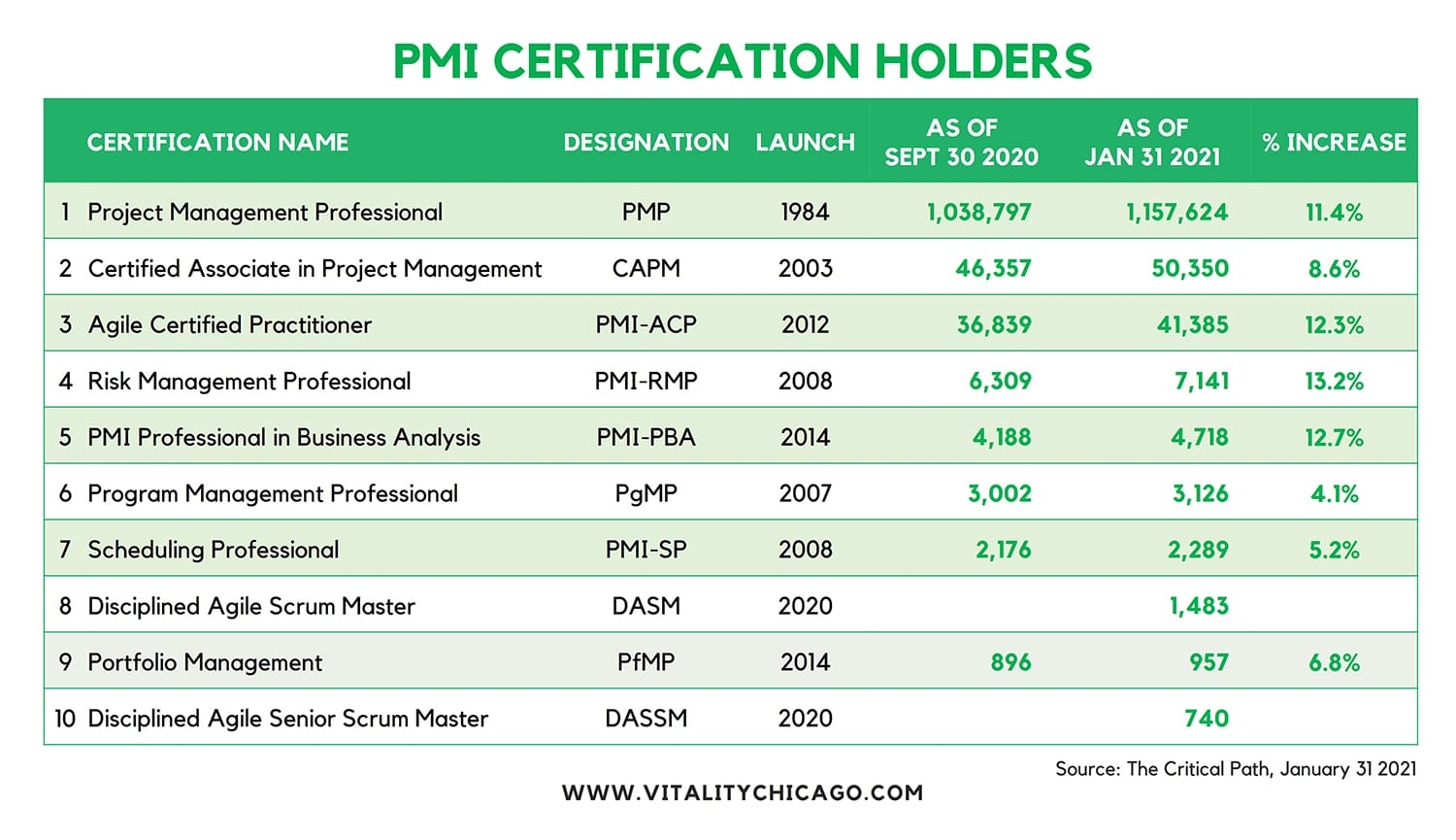
Another Data Point on Agile Certifications
For another data point on agile certifications, I was surprised by a Salary Survey published by DICE and a summary article written by Nick Kolakowski. In his article, Kolakowski showed the relationship between salary and certification.
Excerpted from his article were the three salary statistics highlighted in the chart below, which I found a little surprising. What this is saying is that the Scrum Master certification is currently slightly more valuable than the PMP. Wow, perhaps that is why PMI decided to use the Scrum Master title for their new Disciplined Agile Scrum Master and Disciplined Agile Senior Scrum Master training and certification courses?
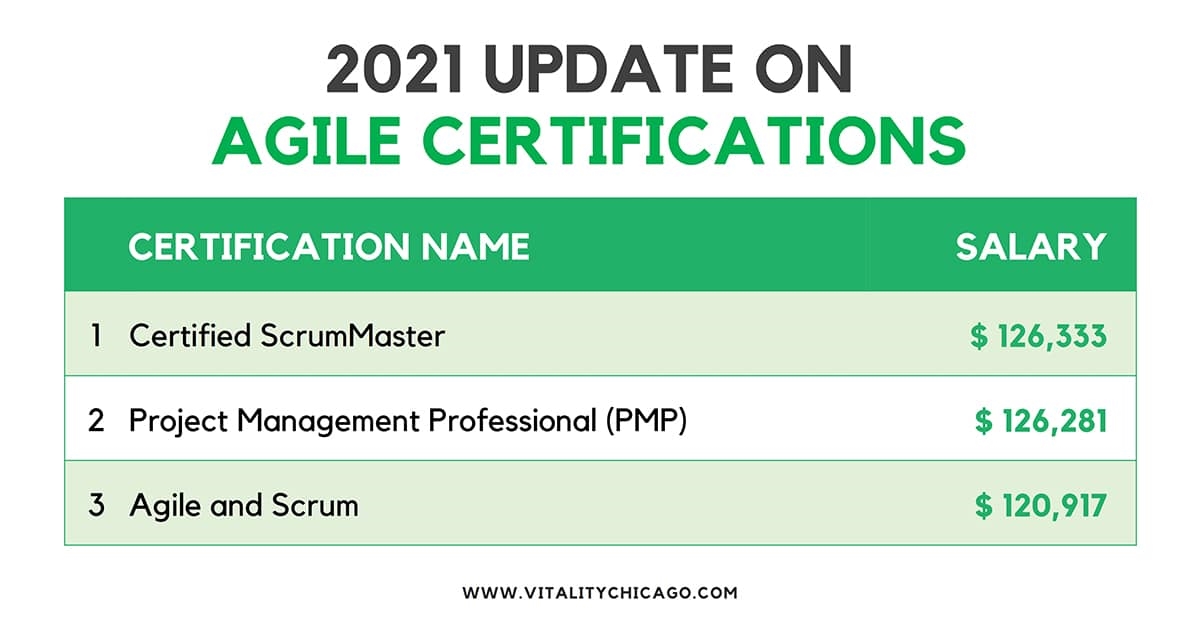
For completeness, I’ve included the entire list of technical certifications from Kolakowski’s article about the DICE Salary Survey below. I just sorted the certifications by value.
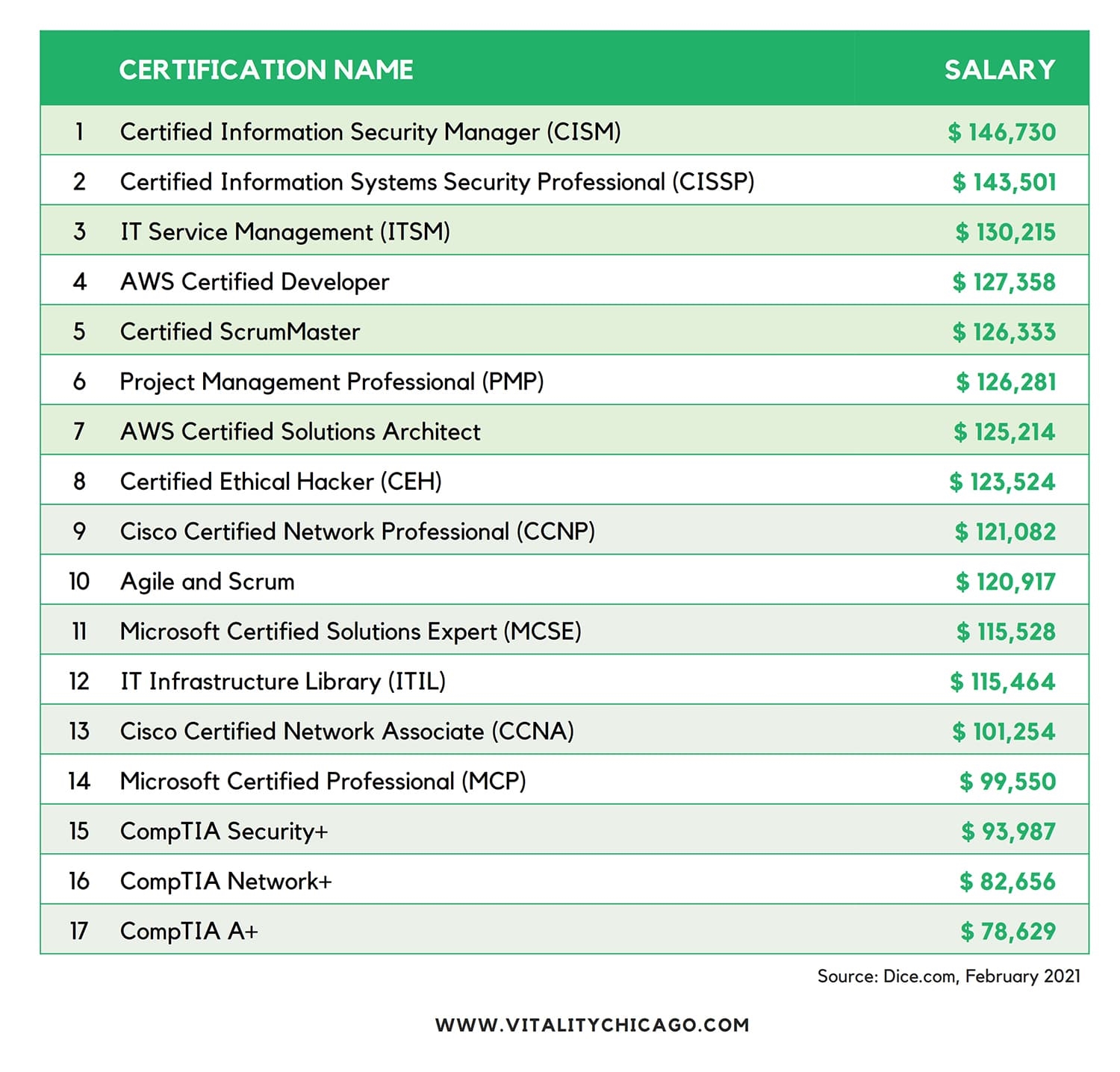
What We Are Learning from our Disciplined Agile Certification Training
To round out this article, I reached out to our Certified Disciplined Agile Instructor (CDAI) Jonathan Lee to hear from him about who is taking the Disciplined Agile Training, how it is going and common questions he gets about the Disciplined Agile certifications. Jonathan has been teaching the DALSM, DASM and DASSM courses starting in 2020. Here is what Jonathan had to say about the students:
Anthony: So Jonathan, what types of students are joining courses? Are they coming from a Scrum background, PMI background or a mix?
Jonathan: Here is what we can tell so far:
- 78% of students have their PMP certifications
- 22% of students did not have any certification at all
- 31% of the students have, in addition to PMP, other agile certifications such as Scrum Alliance, Scrum.org, SAFe, and PMI (PMI-ACP)
- 5% of students only had Scrum Alliance or Scrum.org certs.
Anthony: Do most of the students who take the class plan to take the certification after for either the DASM or DASSM?
Jonathan: Yes, the majority of them said they intend to take the exam.
Anthony: What areas of the training do participants tend to have the most difficulty?
Jonathan: They struggle most with situational questions. Since this is an open book and open notes exam, straightforward questions are fairly easy to answer. When a question is situational and asks what would be the best answer, that is where some people can get tripped up. My students tell me that the DASM exam is pretty straightforward. On the other hand, the DASSM exam is much more difficult and has more situational questions. The questions force you to think deeply about the best answer and most students say they have to choose between two possible correct answers.
Anthony: How often do you think participants pass the exam on the first attempt?
Jonathan: That’s a good question. I think the DASM exam is much easier than the DASSM so I think many students pass the DASM exam on their first or second attempt. It is dependent on how much the student was focused during the training and comprehended the information and/or studied before the exam. That said, approximately 80% of students that took the DASM course have passed the exam. There were some who were busy with work and other things that missed the 30-day window and weren’t able to even attempt their first try at the exam.
As for the DASSM, it is a lot harder than the DASM and I am still gathering data so will have to wait on stats but I can tell you that a number of students are failing the exam multiple times and have to retest because questions are more difficult and challenging.
A great thing right now is that PMI is currently providing up to 3 attempts to pass the exam. That takes the pressure off a little and will make it easier to pass the exam. I tell my students to take their first exam attempt as soon as possible, within a week, to gauge their level of knowledge and then brush up on areas that they lacked based on their exam experience and try to take the exam again.
Anthony: What are you doing now to help participants achieve the certification?
Jonathan: We provide a complimentary online DASM/DASSM exam prep session after the training, usually scheduled one week from class completion. In that session we go over key focus areas. We also provide sample exam questions for students to take and get a feel for the type of questions they can expect on the exam. So far we have received a lot of great feedback on our exam prep sessions from students. They’ve said it really helped them in their preparation, confidence and ultimately in passing the exam.
Anthony: Should participants start with DASM or go directly to DASSM?
Jonathan: For those who are experienced agilist and have been actively practicing agile ways of working for two or more years, I recommend that they skip the DASM and go directly to the DASSM course. But before you do that, it is highly recommended that you, at a minimum, read the first 107 pages of the Choose Your WoW book by Scott Ambler and Mark Lines. PMI Members can download this book for free from the PMI site.
Those that are new to agile should start with the DASM course and then work toward the DASSM. Or if they have taken some other agile training before but haven’t really practiced agile ways of working, then start with the DASM. This will provide a solid Disciplined Agile foundation to start building agile skills.
After taking the DASM, they should take the DASSM soon after even if they don’t have the agile experience. That way they are aware and learn the advanced skills that are taught in the DASSM course. The DASSM course not only dives into more complex scenarios but also covers how to build high-performance teams, emotional intelligence, conflict management and other useful skills that team leads need to have in their toolbox.
Anthony: What advice would you give people considering taking the DA training?
Jonathan: Disciplined Agile is a great tool kit to learn and establish your base of understanding as you get engaged in agile way of working. DA really helps you better understand what “being agile” really means and helps you to get your mindset in the right place before you start engaging in “doing agile” work. We all need to continuously learn and grow our knowledge to stay relevant in this fast-evolving environment we live in these days. As Albert Einstein once said, “Once you stop learning, you start dying”
Anthony: Last question – which format for training seems to be most popular, weekends, evenings, mornings, full-day vs half day?
Jonathan: Great question. I have to say “it depends” and let me elaborate. Student’s whose company is paying for the training tend to prefer weekday training. Those paying out of their own pocket and working during the week tend to prefer the full-day weekend training. Students don’t want to consume their vacation time if the company doesn’t pay for it or if they are independent consultants and don’t want to lose billable hours.
With that said, sitting in on the online training for two full days of 8 hours is a lot, especially back-to-back days. We do take frequent breaks but I think it is a lot to absorb for students and sit in front of Zoom meetings all day for two days straight. So we are offering other options as well. For example, we offer a 3-day training option for the DASM with classes running from 8am to 1pm. We also offer a 4-day option for the DASM with classes running from 8am to Noon. These formats allow students to take the class in the morning and get back to work during the afternoon. Or they can use the afternoons to study up on the materials learned that morning and be better prepared for the following day’s learning so that they can take the exam shortly after the course completion.
Another option we offer is two consecutive Saturdays for both the DASM and DASSM. This option does not consume the entire weekend for those that have social/family responsibilities or need to attend to other things during a weekend. We are also going to test out the weeknight option. We just created this one so will have to see what the demand looks like.
At this time I can’t say one approach is clearly better than the other. Time will tell and I can provide an update later this year.
This article originally appeared here and has been republished with permission
Business & Finance Articles on Business 2 Community
(62)

